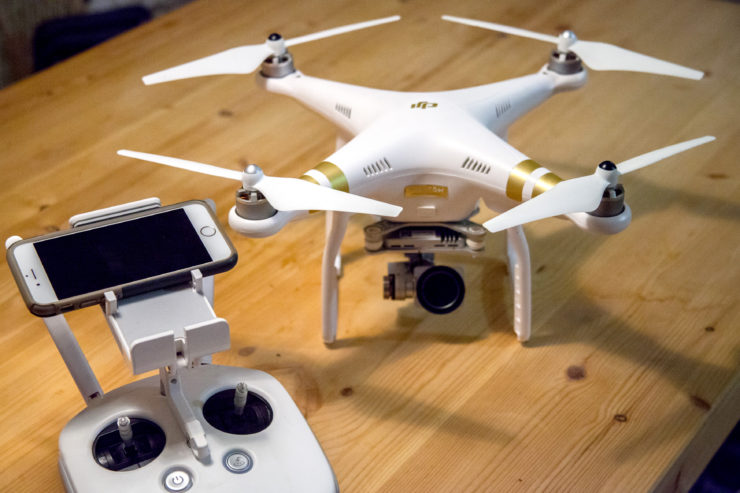Drones have been a hot commodity for a while now. These small unmanned aircraft have opened new possibilities for enthusiasts of all kinds. The affordability of drones have serious aviators, hobbyists, and even photographers looking to own a drone of their own. Whatever your reasons for wanting to own a drone, there are several things you’ll want to keep in mind before deciding on a drone to purchase. Here are some of the main features you should consider before pulling the trigger on your drone purchase and jumping into the next frontier.

Price
With many varieties of drones to choose from, all with largely varying features offered, the price range is huge when it comes to choosing a drone. There are quality drones that sell for $200, and sometimes even less. Depending on the options, or bells and whistles you choose for your drone, you can spend up to several thousand dollars on your purchase.
Flight Time
You might be surprised to know that average drones don’t often have a great deal of flight time. The typical time span that your drone will stay in the air is roughly 10 minutes. However, higher end models can stay in the air for up to 30 minutes, but the extra flight time could cost you big bucks. Extended flight time comes with a price.
Drone Range
Range is the measure of the distance that you can be away from the drone, while still maintaining control of it. A typical budget quad-copter drone has a range of about 200 feet. Models with more advanced technology can travel as far as 10,000 feet but come with a much higher price tag. Keep in mind, FAA regulations require that you be able to keep your drone in line of sight at all times you are airborne, so you might not need a drone with a range of 10,000 feet.
Battery Life
Drones have powerful and smaller batteries these days. This is a great benefit to small unmanned aircraft, because the lighter the aircraft, the better and longer it will fly. The battery in a drone should hold a lot of juice, as it might be needed to power the camera, or any other attachment that requires power to function properly. There are many things to consider about your drone’s power source, such as battery lifespan, charging time per battery, extra battery cost, additional charger cost, and replacement battery cost.
Speed Limitations
Reasonably priced drones are capable of topping speeds of 10—15 mph. However, if money is no object, then you might be interested in a drone that reaches a speed of 60 mph. Racing drones cost a lot but are exhilarating to control. Keep in mind that the FAA (Federal Aviation Administration) places a speed limitation of 100 mph on all drones.
Types of Camera
Many Drones now feature built in and removable cameras. It’s important to decide what you will be using the camera for. If you are looking to take high quality photos and videos, the best camera you can get is a 4k. This is almost 4 times the rate of standard 1080p cameras providing you with a much higher quality. If you are looking to use your Drone for commercial purposes, it is usually worth paying the extra to get a 4k camera.
Gimbal
Usually this option comes standard on the expensive models and helps with camera control. A drone’s gimbal is the pivoted support mechanism that keeps the camera steady, even when the drone is tilting in different directions. Should you want to add a gimbal attachment, this might be a more cost-effective option if you are looking to take video or photos that are steady and clear, regardless of environment.
What the label on the package means about gimbal:
There are 3 different options when purchasing drones, and these options will be listed on the packaging, or within online specifications. These labels will tell you what level of assembly you are purchasing your drone in.
Bind and Fly – (BNF) this means that the drones controller is sold separately. You’ll need to buy the controller and bind it to the remote-control aircraft before you are able to fly it. Make sure you buy a compatible controller with the same build protocol and channel as the drone.
Almost Ready to Fly – (ARF) Some drones come only half-assembled, with the parts detached. Often, these kits have the parts separate, and you will have to assemble them. Other drones might even be missing some parts, which require you to buy the parts separately.
Ready to Fly – (RTF) The most inexpensive and user-friendly drones usually come ready for flight. These are drones that just need to be charged. Once you put the controller and batteries in place, you’ll be ready to take to the skies.
Final Thoughts
When purchasing a drone, you’ll want to spend a little time deciding which options are most important, assessing your needs, and then narrowing down your options to stay within your budget, that way you can enjoy your new drone for years to come!
|